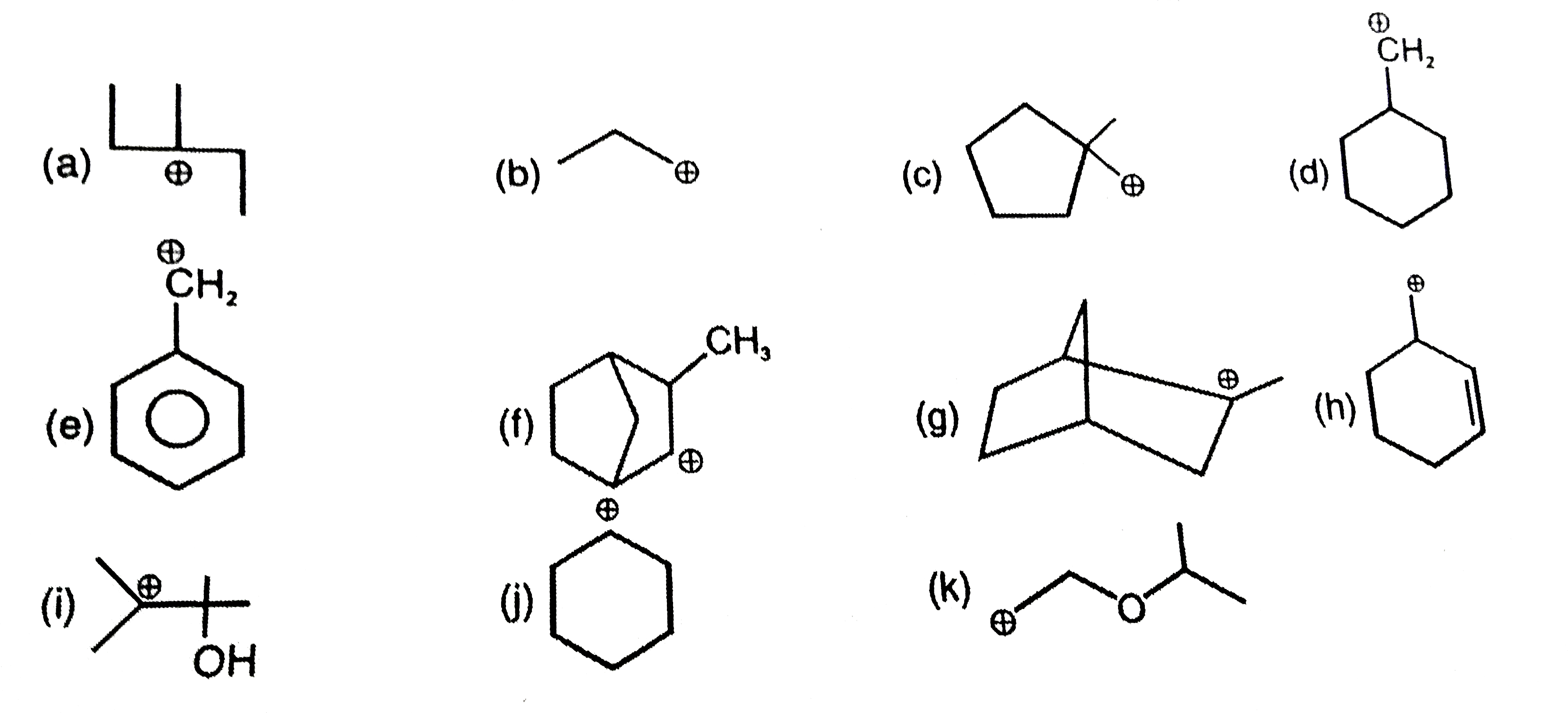Which of the following carbocation can not undergo rearrangement ?
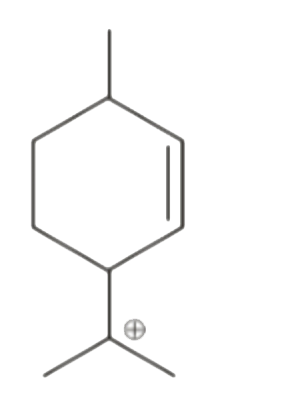
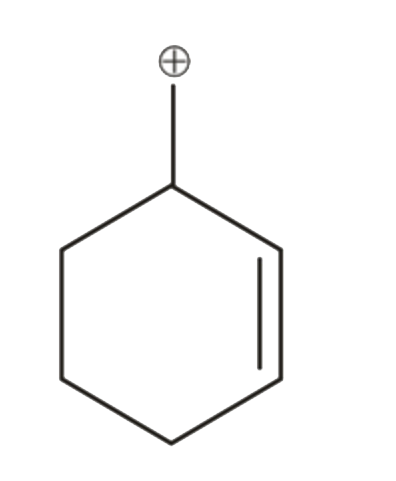
CH3−⊕C∣CH3−CH−CH3
C6H5−CH−⊕CH2
The correct Answer is:C
To determine which carbocation cannot undergo rearrangement, we need to analyze the stability of the carbocations presented in the options. Carbocations tend to rearrange to achieve a more stable state, typically moving from a less stable to a more stable form (e.g., from primary to secondary to tertiary).
1. Identify the Carbocations:
- We have several carbocations to analyze. Let's denote them as:
- Option 1: Tertiary Carbocation (3°)
- Option 2: Primary Carbocation (1°)
- Option 3: Tertiary Carbocation (3°)
- Option 4: Primary Carbocation (1°)
2. Understanding Carbocation Stability:
- Carbocations are classified based on their degree:
- Tertiary (3°) > Secondary (2°) > Primary (1°)
- The most stable carbocation is tertiary, followed by secondary, and the least stable is primary.
3. Analyze Each Option:
- Option 1 (3°):
- This is a tertiary carbocation. If a hydrogen shifts to form a new carbocation, it would still be a tertiary carbocation. Thus, rearrangement is possible.
- Option 2 (1°):
- This is a primary carbocation. If a hydrogen shifts, it can form a more stable tertiary carbocation. Hence, rearrangement is possible.
- Option 3 (3°):
- This is also a tertiary carbocation. Any rearrangement would lead to a less stable primary carbocation. Therefore, rearrangement will not occur because it would decrease stability.
- Option 4 (1°):
- This is a primary carbocation. If a hydrogen shifts, it can form a more stable secondary or tertiary carbocation. Thus, rearrangement is possible.
4. Conclusion:
- The only carbocation that cannot undergo rearrangement is Option 3, which is a tertiary carbocation that would lead to a less stable primary carbocation if rearranged.
Final Answer:
Option 3 is the carbocation that cannot undergo rearrangement.
- We have several carbocations to analyze. Let's denote them as:
- Option 1: Tertiary Carbocation (3°)
- Option 2: Primary Carbocation (1°)
- Option 3: Tertiary Carbocation (3°)
- Option 4: Primary Carbocation (1°)
- Carbocations are classified based on their degree:
- Tertiary (3°) > Secondary (2°) > Primary (1°)
- The most stable carbocation is tertiary, followed by secondary, and the least stable is primary.
- Option 1 (3°):
- This is a tertiary carbocation. If a hydrogen shifts to form a new carbocation, it would still be a tertiary carbocation. Thus, rearrangement is possible.
- Option 2 (1°):
- This is a primary carbocation. If a hydrogen shifts, it can form a more stable tertiary carbocation. Hence, rearrangement is possible.
- Option 3 (3°):
- This is also a tertiary carbocation. Any rearrangement would lead to a less stable primary carbocation. Therefore, rearrangement will not occur because it would decrease stability.
- Option 4 (1°):
- This is a primary carbocation. If a hydrogen shifts, it can form a more stable secondary or tertiary carbocation. Thus, rearrangement is possible.
- The only carbocation that cannot undergo rearrangement is Option 3, which is a tertiary carbocation that would lead to a less stable primary carbocation if rearranged.
Option 3 is the carbocation that cannot undergo rearrangement.
Topper's Solved these Questions
Similar Questions
Knowledge Check
Which of the following carbocation will undergo rearrangemment ?
A B
B CCH3−C∣CH3H−+C=ODCH3−NH−+CH−C∣CH3H−CH3
CCH3−C∣CH3H−+C=ODCH3−NH−+CH−C∣CH3H−CH3Which of the following carbocation will undergo rearrangemment ?
A B
B CCH3−C∣CH3H−+C=ODCH3−NH−+CH−C∣CH3H−CH3
CCH3−C∣CH3H−+C=ODCH3−NH−+CH−C∣CH3H−CH3Which of the following carbocation will undergo rarrangement ?
A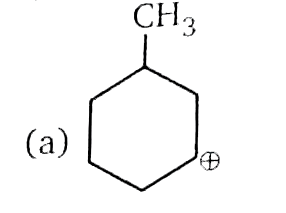 B
B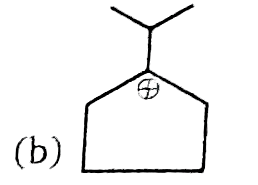 CCH3−C∣CH3H−C⊕=ODCH3−NH−⊕CH−C∣CH3h−CH3
CCH3−C∣CH3H−C⊕=ODCH3−NH−⊕CH−C∣CH3h−CH3
Which of the following carbocation is most stable ?
View SolutionWhich of the following carbocation is most stable?
View SolutionWhich of the following carbocation is most stable ?
View SolutionWhich of the following carbocation is most stable ?
View SolutionWhich of the following carbocation is most stable?
View Solution

